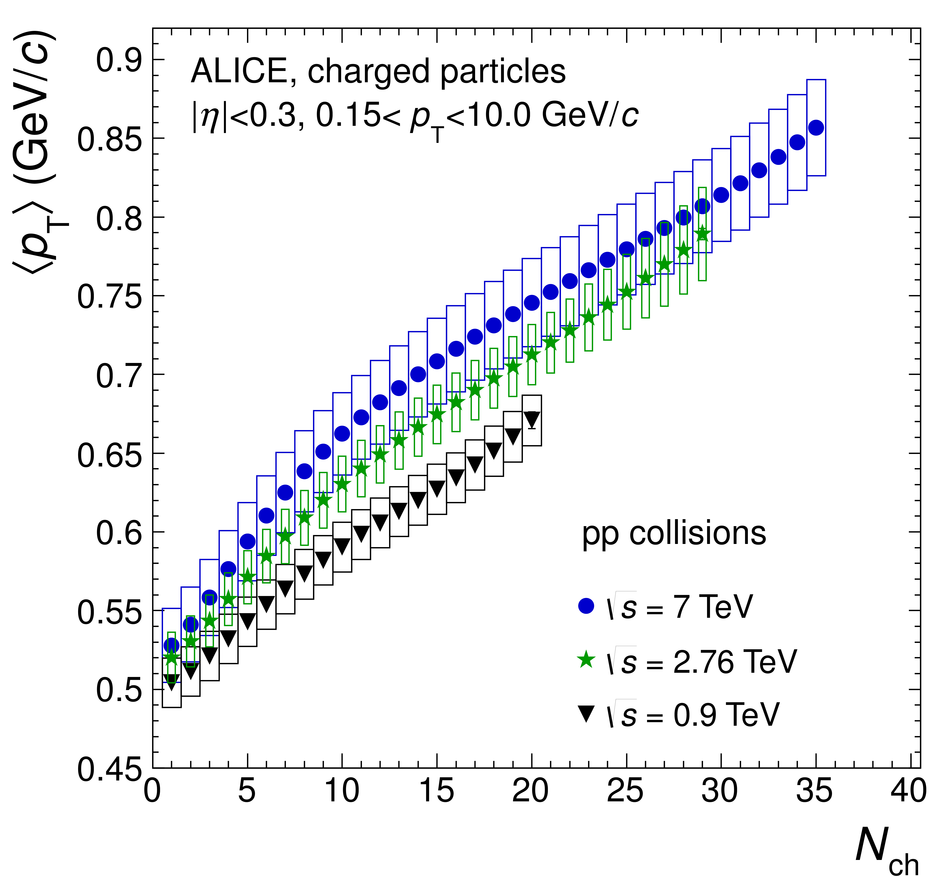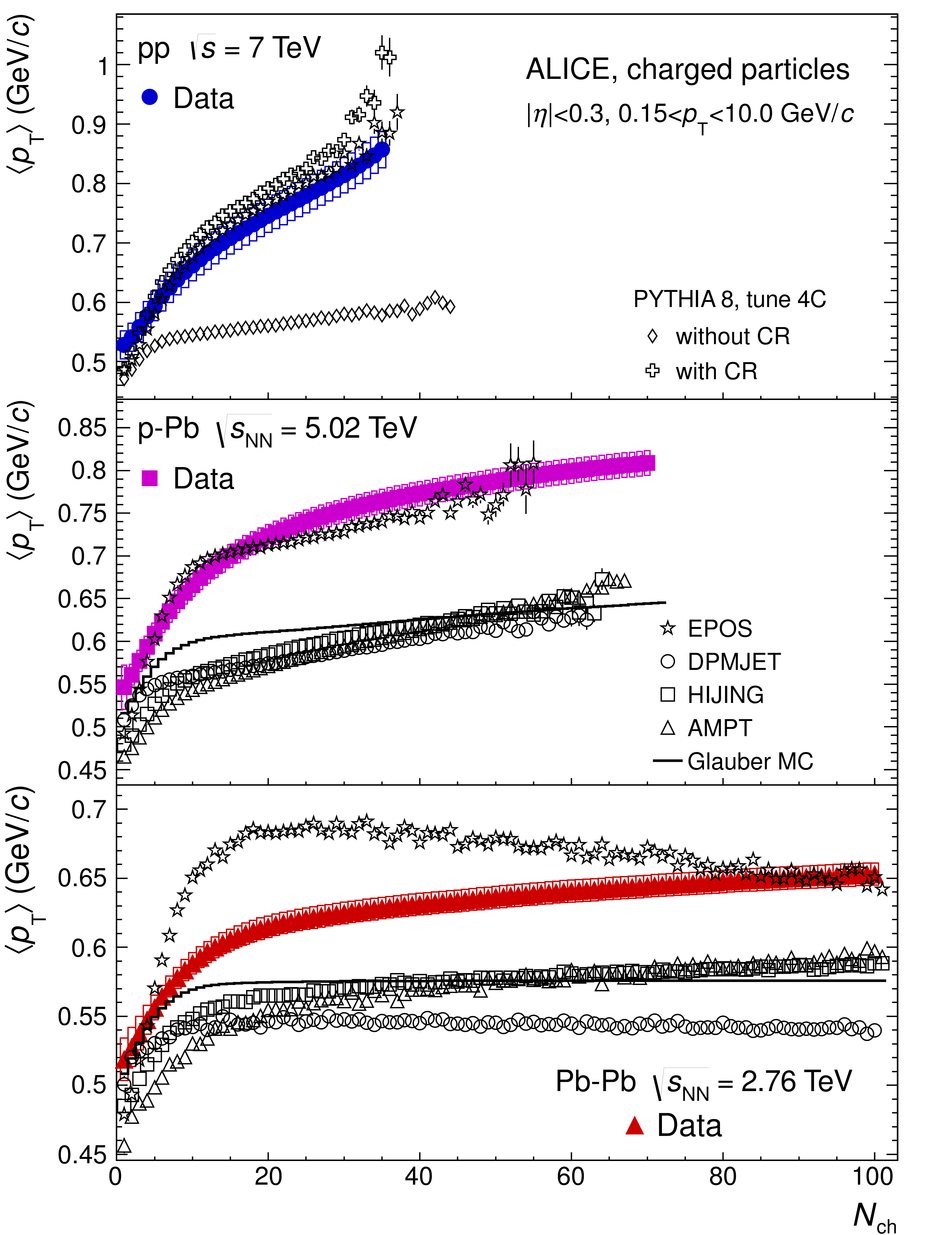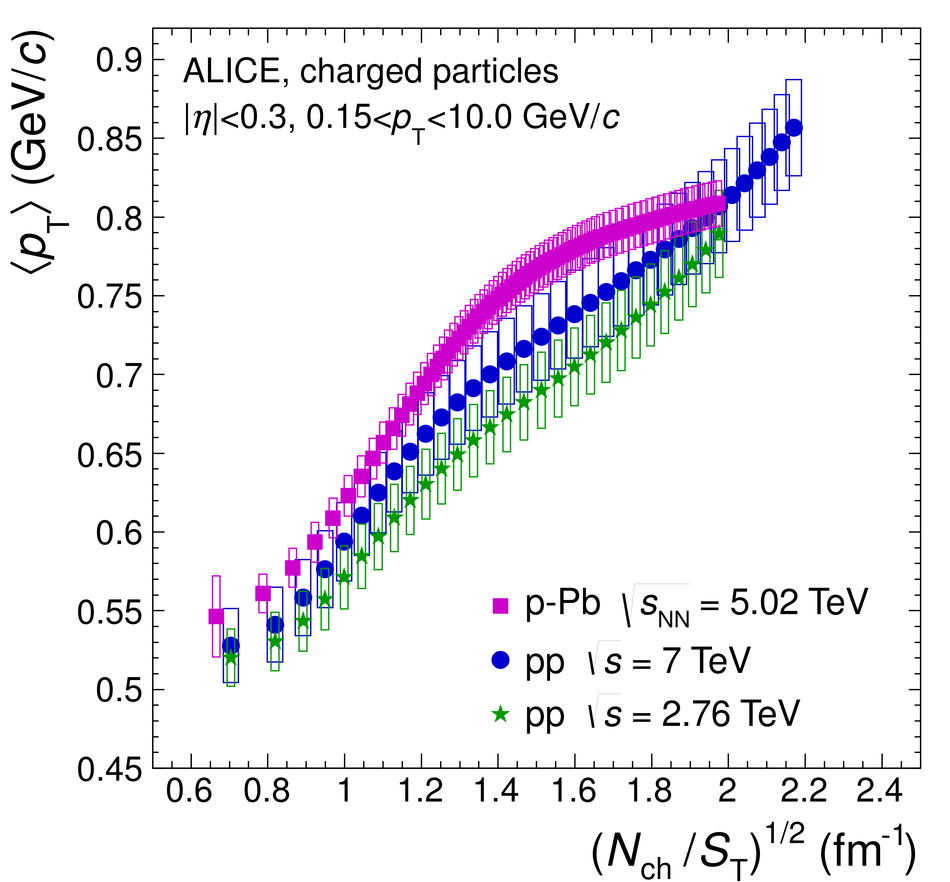The average transverse momentum $\langle p_{\rm T}\rangle$ versus the charged-particle multiplicity $N_{\rm ch}$ was measured in p-Pb collisions at a collision energy per nucleon-nucleon pair $\sqrt{s_{\rm NN}}=5.02$ TeV and in pp collisions at collision energies of $\sqrt{s}=0.9$, 2.76, and 7 TeV in the kinematic range $0.15<~p_{\rm T}<~10.0$ GeV/$c$ and $|\eta|<~0.3$ with the ALICE apparatus at the LHC. These data are compared to results in Pb-Pb collisions at $\sqrt{s_{\rm NN}}=2.76$ TeV at similar charged-particle multiplicities. In pp and p-Pb collisions, a strong increase of $\langle p_{\rm T}\rangle$ with $N_{\rm ch}$ is observed, which is much stronger than that measured in Pb-Pb collisions. For pp collisions, this could be attributed, within a model of hadronizing strings, to multiple-parton interactions and to a final-state color reconnection mechanism. The data in p-Pb and Pb-Pb collisions cannot be described by an incoherent superposition of nucleon-nucleon collisions and pose a challenge to most of the event generators.
Phys. Lett. B 727 (2013) 371-380
HEP Data
e-Print: arXiv:1307.1094 | PDF | inSPIRE
CERN-PH-EP-2013-111




